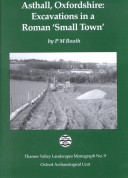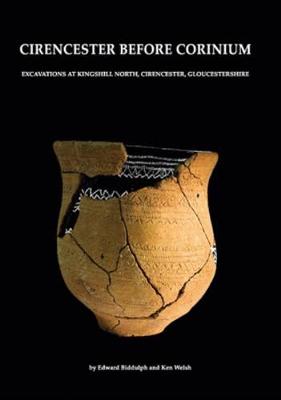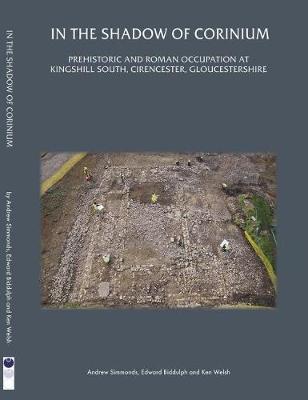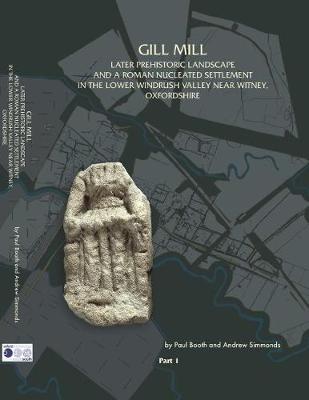Thames Valley Landscapes Monograph
4 primary works
Book 9
The Oxford Archaeological Unit carried out excavations at the Roman `small town' of Asthall, in advance of the construction of a Thames Water pipeline. The excavation located the axial Roman road through the settlement and a complex sequence of timber and stone structures which fronted onto the road were partially revealed. These buildings range in date from the mid 1st century AD through to the 4th century. Closer to the settlement margin an ironworking area and a later enclosure containing a small late Roman cemetery were examined. This report describes these excavations and discusses the artefacts including coins and ironwork and pottery. Chapters also discuss the burials, animal bones and environmental remains.
Book 34
Excavation by Oxford Archaeology in 2008 at Kingshill North on the north-eastern edge of Cirencester uncovered evidence for occupation that opens a remarkable window into Cirencester's prehistoric past. The earliest inhabitants lived during the late Neolithic. They dug storage pits, which over time were filled with decorated Grooved Ware, bone pins and awls, flint tools, stone axe fragments, animal bones and antler and the burnt remains of cereal, nuts and fruit. The evidence points to the seasonal gathering of people to exchange exotic objects and indulge in communal feasting. Two Beaker burials were also found. Both individuals were females who were born outside the region in the chalkland areas of England. Another burial dated to the middle Bronze Age.
More storage pits were dug in the middle Iron Age. In the late Iron Age, a small settlement was set within a pastoral landscape. Three human burials were recorded; all were interred in the settlement's enclosure ditch. The site was abandoned before the town of Corinium Dobunnorum was established. A cremation burial was placed in the former enclosure ditch between the late 1st or early 3rd century AD. The rite was Roman, but the location harked back to earlier burial practices.
More storage pits were dug in the middle Iron Age. In the late Iron Age, a small settlement was set within a pastoral landscape. Three human burials were recorded; all were interred in the settlement's enclosure ditch. The site was abandoned before the town of Corinium Dobunnorum was established. A cremation burial was placed in the former enclosure ditch between the late 1st or early 3rd century AD. The rite was Roman, but the location harked back to earlier burial practices.
Book 41
Excavations by Oxford Archaeology at Kingshill South on the eastern edge of Cirencester in Gloucestershire uncovered evidence for prehistoric and Roman activity. The earliest evidence comprised a pit dating to the late Neolithic period or early Bronze Age, and the site was also inhabited during the late Bronze Age or early Iron Age. There was a gap in activity until the late 1st century AD, when fields were laid out on the site's southern slope. Three buildings were recorded within the area of the excavation. Building 1 was a domestic, stone-footed building best described as a proto-villa. Building 2 was an aisled building with an apsidal end and is likely to have served an agricultural function. Both were constructed in the 2nd century AD. Building 3, dated to the late Roman period, is interpreted as a granary. The settlement was abandoned by the late 4th century AD. The site remained agricultural land until the establishment of Cirencester's eastern suburb in the 20th century. Grain, meat, and wool, among other goods, were produced at the Roman settlement, probably to supply the town of Corinium Dobunnorum. Evidence for craft activity, including pin-making, horn-working and smithing, was also recorded. Formal burials and disarticulated human bone were encountered across the settlement. Analysis of the bones revealed remarkable insights into the lives of the settlement's inhabitants. The habitual, possibly craft-related, activity performed by one young female adult required her to spend much of her time in a squatting position. One adult male had a facial disfigurement which had an impact not just on his daily life, but also the manner of his burial.
Book 42
The valley floodplain landscape covered by the Gill Mill quarry, almost 130ha, was intensively exploited from about 300 BC at a variety of Iron Age settlements. The largest of these remained in occupation into the early 3rd century AD, but meanwhile a large nucleated settlement grew up around a road junction roughly 1km distant to the NW. This became the sole focus of occupation, covering an area of about 10ha. Featuring multiple ditched enclosures, some in very regular layouts associated with one of the roads, the settlement contained relatively few identified buildings and appears to have had a specialised economic role related to systematic cattle management, illuminated in part by large finds and environmental assemblages. It may have been an integral component of a wider estate holding and perhaps had an administrative focus (including a shrine) at its unexcavated centre. It is notable that occupation of the site had almost entirely ceased by about AD 370.



